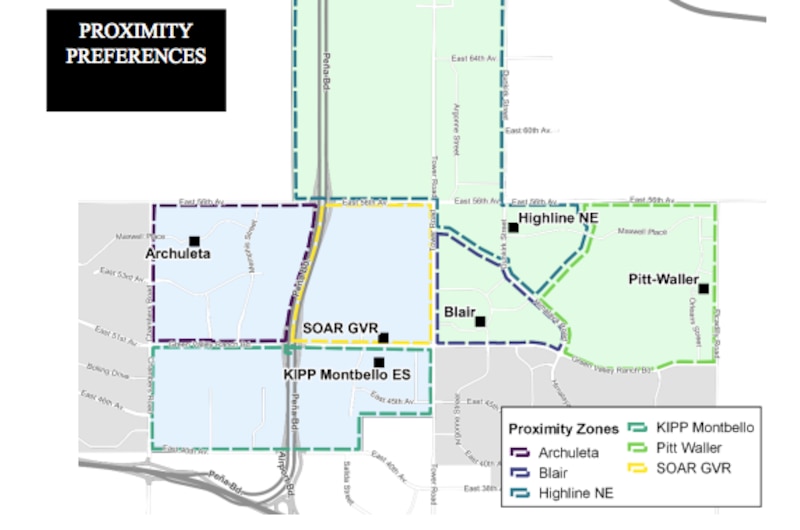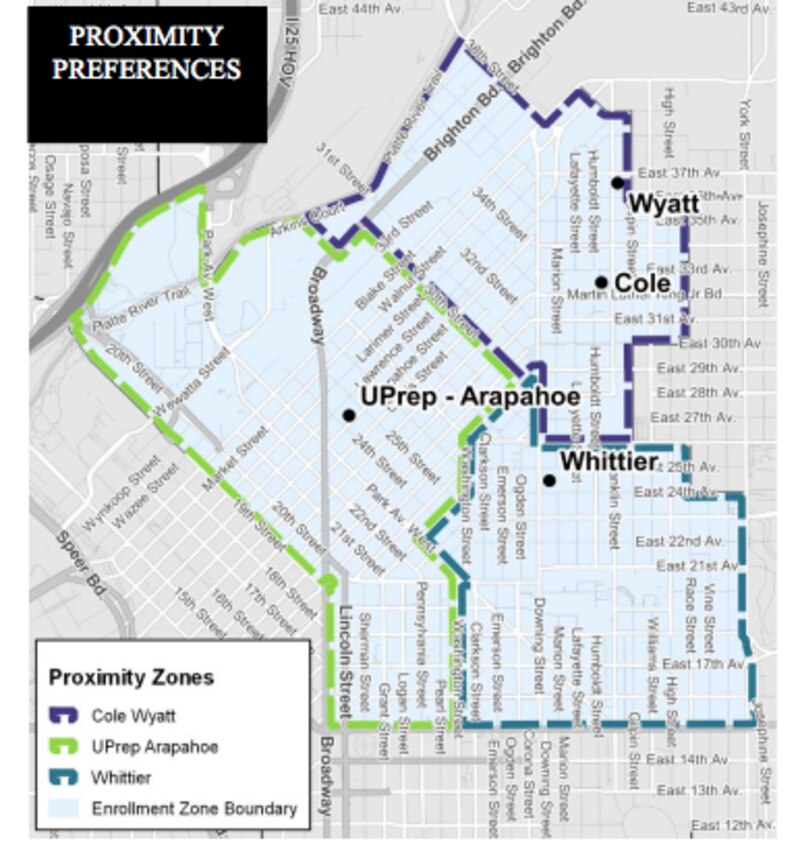Elementary school students living in northeast Denver will be part of enrollment zones next year, which means they will no longer be guaranteed a seat at the school closest to them but will be asked to choose from several nearby schools.
To alleviate an array of school boundary concerns, the Denver school board voted 6-to-1 Thursday to create three new enrollment zones: two in the growing far northeast Green Valley Ranch and Gateway neighborhoods, and one in the gentrifying near northeast neighborhoods of Five Points, Cole, Whittier and City Park West.
The vote brings to 14 the number of enrollment zones in Denver Public Schools. The zones are big school boundaries with several schools inside them. Students are guaranteed a spot at one of the schools but not necessarily their first choice or the school closest to where they live.
However, after learning lessons from previous zones, the district will give students in the new zones “enhanced priority” to get into the schools nearest to them.
The new elementary zones include a mix of district-run schools and charter schools.
The two zones in far northeast Denver will be divided by Tower Road, a major thoroughfare in the area. The zone west of Tower Road includes Archuleta Elementary, SOAR at Green Valley Ranch and KIPP Northeast. The zone east of Tower Road includes Omar D. Blair, Highline Academy Northeast and Florida Pitt Waller.
This map shows the zones and which students will get enhanced priority where:

The north-central zone includes four schools: Whittier ECE-8 School, Wyatt Academy, University Prep Arapahoe Street and Cole Arts and Science Academy.
This map shows the same for that zone:

Two other schools that are physically located in the boundary won’t be part of the zone: Polaris Elementary, which is a magnet school for highly gifted students, and Downtown Denver Expeditionary School, a charter located in the same building as the district’s headquarters.
Because of construction in the area, district officials said it would be impossible for school buses to service the charter school, which would be necessary if it were included in a zone. But the board instructed the district to “continue to evaluate the ability to add Downtown Denver Expeditionary School into the zone in the future.”
Board member Carrie Olson was the only one to vote against creating the zones. She said her vote was influenced by concerns she heard from families and community members, who she noted often feel the district isn’t listening to them.
Some parents who addressed the board Thursday expressed opposition to the zones. Amy Carrington said she was “dumbfounded” by the idea.
“I cringe at what amazing resources DPS could be providing every school, and especially struggling schools, with the amount of money, time and effort put into the choice system,” Carrington said.
The zones will have the most impact on incoming kindergartners and new students. Current students won’t have to reapply to continue attending their schools.
The district has used enrollment zones to compel families to participate in school choice, and to encourage integration, which has had mixed results. A community committee tasked with recommending ways to increase integration recently suggested setting up even more zones.
“I do think enrollment zones are showing great promise and doing some of the things we want to do for our kids with regard to access, equity and integration,” board president Anne Rowe said Thursday.
The reasons for creating the three new zones have to do with enrollment trends. In far northeast Denver, where there is still vacant land and developers are building more single-family houses, the number of students is expected to increase, putting a strain on the schools closest to the development. The zones are a strategy to more evenly distribute any new students.
In near northeast Denver, the opposite is occuring. The student population is decreasing as neighborhoods gentrify and housing prices rise, pushing lower-income families out. As a result, the number of students in some school boundaries has dipped too low to sustain those schools.
The recent closure of Gilpin Montessori elementary school in Five Points also made it necessary to reconfigure school boundaries in the area, district officials said.
All three new enrollment zones are expected to have more seats than students, officials said, which will increase the likelihood that students will get into their first-choice schools.
The school choice process for next year begins in February.

